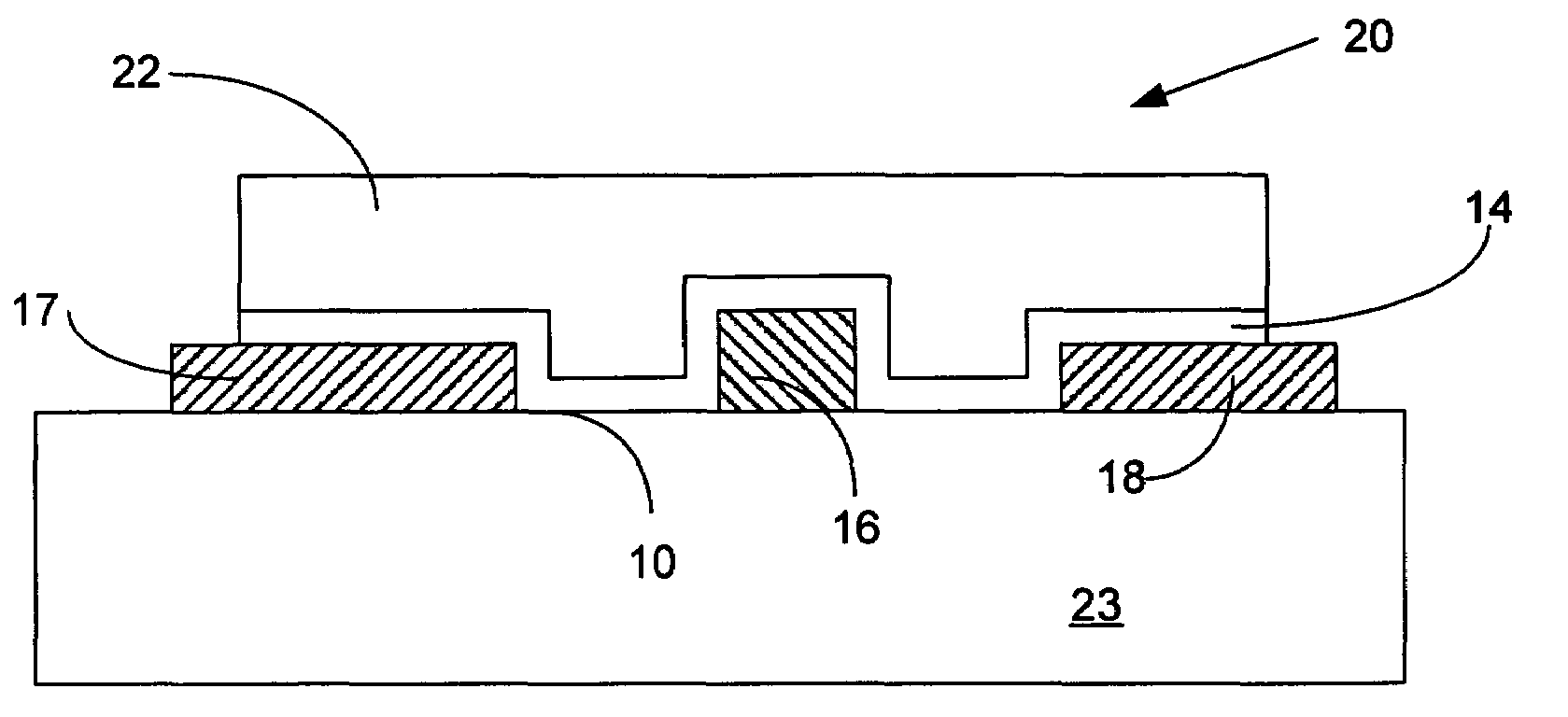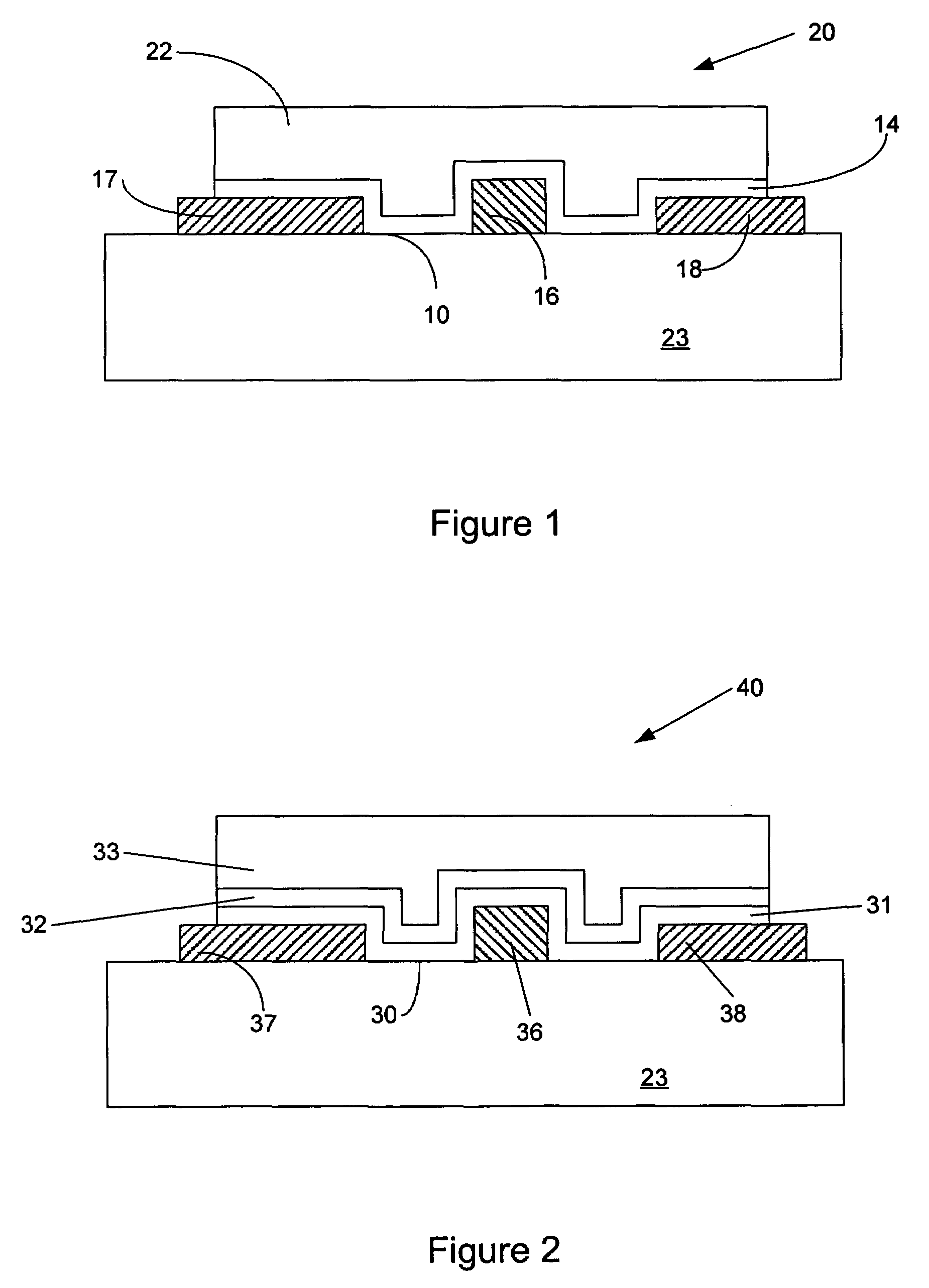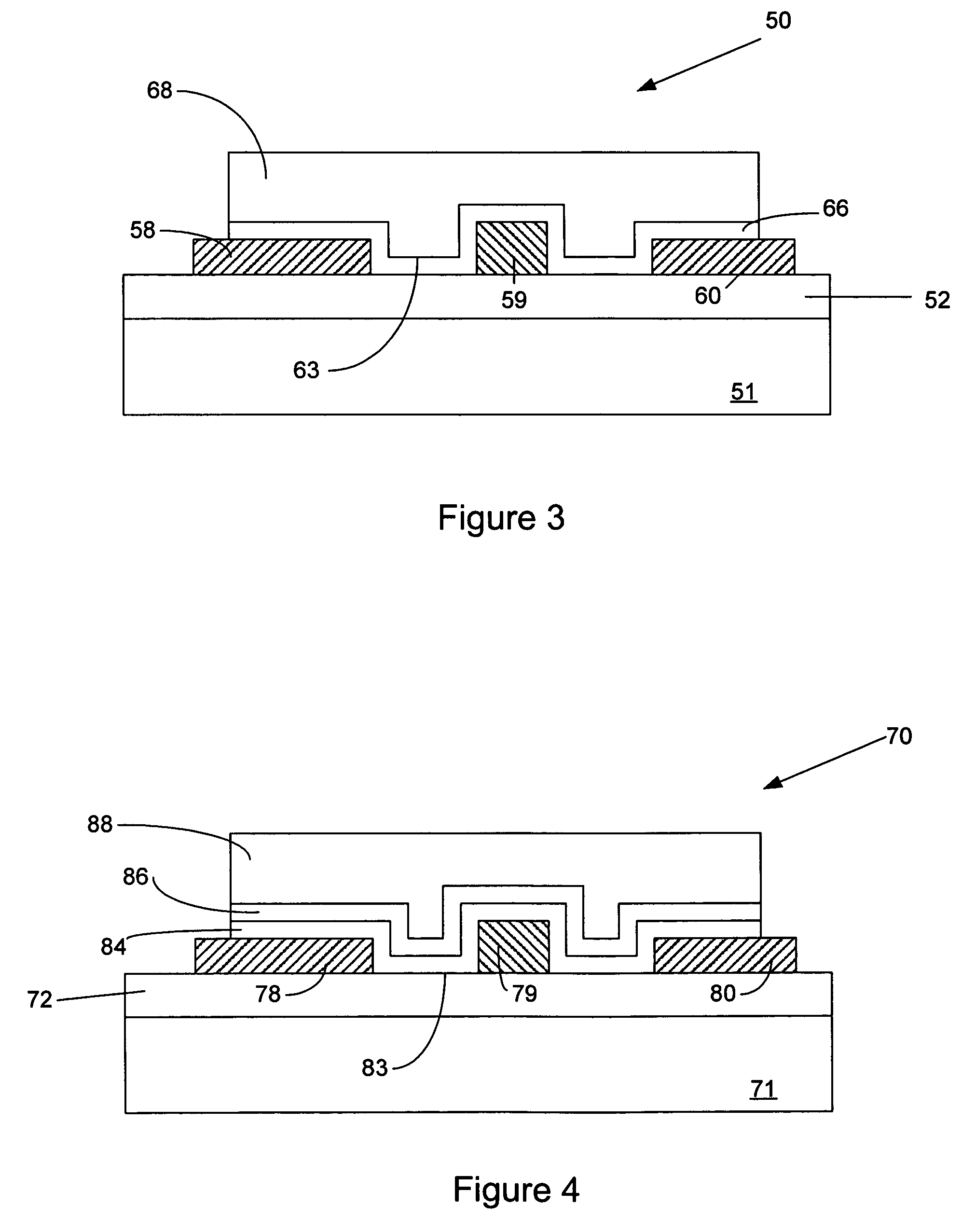Dielectric passivation for semiconductor devices
a technology of semiconductor devices and passivation layers, applied in semiconductor devices, semiconductor/solid-state device details, electrical apparatus, etc., can solve problems such as the drawback of possibly interfering with the operation of the device, affecting the performance of the device in undesirable ways, and limited to protecting the device from outside elements
- Summary
- Abstract
- Description
- Claims
- Application Information
AI Technical Summary
Benefits of technology
Problems solved by technology
Method used
Image
Examples
first embodiment
[0032]the invention is illustrated in FIG. 1 and includes a semiconductor device precursor structure 20 based upon a Group III nitride portion (substrate or epilayer) 23. The semiconductor device precursor 20 has at least one electrical contact 16 on its surface 10 with one of the electrical contacts essentially controlling the electrical behavior of the underlying Group III nitride material. For this specification, the inventors refer to this primary contact 16 as the control or gate contact. This terminology is for convenience of discussion only and is not intended to limit the nature of the invention herein. The electrical response of the semiconductor includes, but is not limited to, overall current flow, carrier flow and recombination, voltage response, and any other electrical variations within the semiconductor that are well known in the art of semiconductor electronics.
[0033]In addition to a gate contact 16, the structure 20 illustrated in FIG. 1 includes a source contact 18...
embodiment 21
[0035]FIG. 6 illustrates an embodiment 21 analogous to FIG. 1, but in which the charge barrier layer 14 covers a portion, but not all, of the surface 10 adjacent the gate contact 16 extending toward the source contact 18, and in which the charge barrier layer 14 also covers a portion, but not all, of the surface 10 adjacent the gate contact 16 extending toward the drain contact 17. The charge barrier layer 14 should be present in areas in which there are large electric fields which are capable of imparting sufficient energy to carriers to enable them to surmount the energy barrier presented by the protective layer 22. Accordingly, it may be particularly important for the charge barrier layer 14 to extend along the drain-side edge of the gate 16. In some embodiments, the charge barrier layer 14 may extend along the drain-side edge of the gate contact 16 for a distance of between about 0.25 and 5 microns. The charge barrier layer 14 may extend along the source-side edge of the gate co...
second embodiment
[0071]As in the second embodiment, the spacer layer 84 may be extremely thin and still provide a protective coating to the semiconductor surface in accordance with the invention herein. The charge barrier layer 86 and the protective layer 88 may, therefore, be thicker than the spacer layer 84. The protective layer 88 is typically much thicker than the charge barrier layer 86. The layers are shown schematically in FIG. 4, and actual devices would have the relative thicknesses described above. The charge barrier layer 86 may be between about 5 and 200 nanometers in thickness. In some embodiments, the charge barrier layer 86 is about 100 nanometers thick. The spacer layer 84 may be between about 0.5 and about 5 nanometers thick.
[0072]The spacer layer 84, charge barrier layer 86, and protective layer 88 of the fourth embodiment are identical to that of the third embodiment. The SiO2 charge barrier layer 86 is deposited by a method selected from the group consisting of plasma-enhanced ch...
PUM
 Login to View More
Login to View More Abstract
Description
Claims
Application Information
 Login to View More
Login to View More - R&D
- Intellectual Property
- Life Sciences
- Materials
- Tech Scout
- Unparalleled Data Quality
- Higher Quality Content
- 60% Fewer Hallucinations
Browse by: Latest US Patents, China's latest patents, Technical Efficacy Thesaurus, Application Domain, Technology Topic, Popular Technical Reports.
© 2025 PatSnap. All rights reserved.Legal|Privacy policy|Modern Slavery Act Transparency Statement|Sitemap|About US| Contact US: help@patsnap.com



